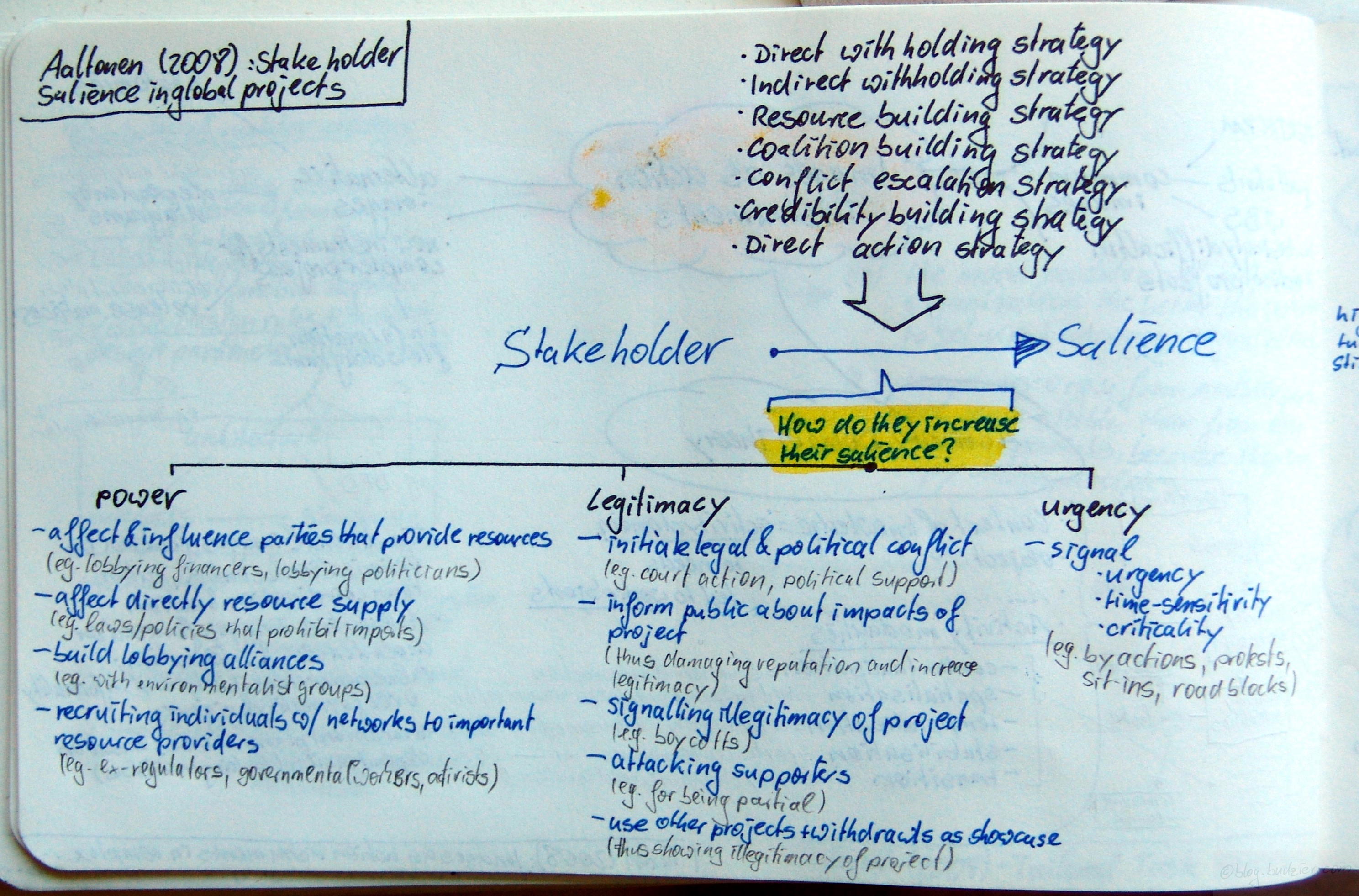Aaltonen, Kirsi; Jaako, Kujala; Tuomas, Oijala: Stakeholder salience in global projects; in: International Journal of Project Management, Vol. 26 (2008), No. 5, pp. 509-516.
http://dx.doi.org/10.1016/j.ijproman.2008.05.004
In their 1997 article, Mitchell et al. define stakeholder salience as „the degree to which managers give priority to competing stakeholder claims“. Furthermore, Mitchell at al. describe how the salience of a stakeholder is defined by three characteristics – (1) the stakeholder’s power to influence the firm, (2) the legitimacy of the stakeholder’s relationship with the firm, and (3) the urgency of the stakeholder’s claim on the firm.
Aaltonen et al. use the case study of a construction project of a paper-mill in South America to outline what strategies Stakeholders use to influence their salience. In line with typical case studies of construction projects Aaltonen’s stakeholders are environmentalist groups trying to influence the project. [I personally think based on my experience what Aaltonen et al. describe is also true for all sorts of projects, just if I think back to my organisational change and IT projects where we had workers‘ unions and councils as equally hard to manage stakeholders.] The authors observed a couple of strategies used:
- Direct/indirect withholding strategy
- Resource building strategy
- Coalition building strategy
- Conflict escalation strategy
- Credibility building strategy
- Direct action strategy
As per Mitchell’s definition these strategies aim to increase influencing power, legitimacy, and/or urgency. The tactics used to increase power were
- Affect & influence parties, that provide resources, e.g., lobbying financiers and politicians
- Affect the resource supply directy, e.g., laws and policies that prohibit imports
- Build lobbying alliances, e.g., between environmentalist groups and unions
- Recruit individuals with networks to important resource providers, e.g., ex-regulators, governmental workers, activists
The tactics used to increase legitimacy were
- Initiate legal and political conflict, e.g., court action, political support
- Inform the public about impacts of the project, thus damaging reputation of the project and increasing legitimacy
- Signal illegitimacy of project, e.g., boycotts, counter impact studies
- Attack supporters, e.g., showing them being partial, exposing lobbyists
- Use other projects as showcases, e.g., using abandoned projects and withdrawls to show the illigitimacy of the project
The tactic used to increase urgency was signalling urgency, time-sensitivity, and criticality of decisions, e.g., by staging direct actions, protests, sit-ins, road blocks.

[…] Go to the author’s original blog: Stakeholder salience in global projects (Aaltonen et al., 2008) […]
For all the best in Trance Music…
This website is really …